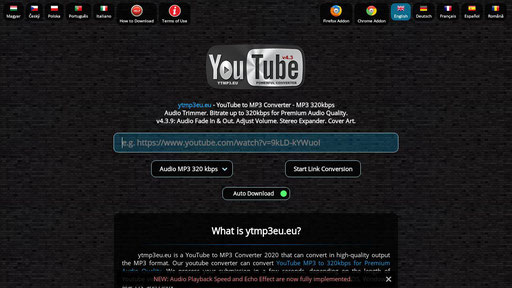
Click New tag in the Default tags section.
 Scroll to the Dynamic tag section of the Floodlight activity. If you don’t already have one created, follow these steps to create a new Floodlight activity in Campaign Manager 360. Navigate to the Floodlight activity that you’re using for YouTube conversion tracking. Make sure you have dynamic tags enabled for your Floodlight configuration. You can click on the link to open the Floodlight activities tab of your linked Campaign Manager 360 advertiser. This code needs to be added in Campaign Manager 360 to the Floodlight activity you want to use for YouTube conversion tracking. You’ll see a snippet of code in this section. Scroll to the YouTube-enabled Floodlight section of your YouTube-enabled Floodlight activity. If you use Campaign Manager 360 to manage your Floodlight activities, follow the steps below to create dynamic Floodlight tags for your YouTube conversions. To track and optimize towards in-app or offline conversions, use Floodlight optimization for YouTube. YouTube-enabled Floodlight activities only support web Floodlight tags. You’ll create these dynamic Floodlight activities differently depending on whether you use Display & Video 360 or Campaign Manager 360 to manage Floodlight. When Floodlight optimization for YouTube is not enabled, YouTube & partners line items use dynamic Floodlight activities for conversion tracking. Set up conversion tracking for YouTube using YouTube-enabled Floodlight activities When Floodlight optimization for YouTube is not enabled, the YouTube Conversions metric in the YouTube conversions report is based on this YouTube-enabled Floodlight methodology. Learn moreĬonversions tracked and reported by YouTube-enabled Floodlight activities do not not take into account any other type of media beyond YouTube.
Scroll to the Dynamic tag section of the Floodlight activity. If you don’t already have one created, follow these steps to create a new Floodlight activity in Campaign Manager 360. Navigate to the Floodlight activity that you’re using for YouTube conversion tracking. Make sure you have dynamic tags enabled for your Floodlight configuration. You can click on the link to open the Floodlight activities tab of your linked Campaign Manager 360 advertiser. This code needs to be added in Campaign Manager 360 to the Floodlight activity you want to use for YouTube conversion tracking. You’ll see a snippet of code in this section. Scroll to the YouTube-enabled Floodlight section of your YouTube-enabled Floodlight activity. If you use Campaign Manager 360 to manage your Floodlight activities, follow the steps below to create dynamic Floodlight tags for your YouTube conversions. To track and optimize towards in-app or offline conversions, use Floodlight optimization for YouTube. YouTube-enabled Floodlight activities only support web Floodlight tags. You’ll create these dynamic Floodlight activities differently depending on whether you use Display & Video 360 or Campaign Manager 360 to manage Floodlight. When Floodlight optimization for YouTube is not enabled, YouTube & partners line items use dynamic Floodlight activities for conversion tracking. Set up conversion tracking for YouTube using YouTube-enabled Floodlight activities When Floodlight optimization for YouTube is not enabled, the YouTube Conversions metric in the YouTube conversions report is based on this YouTube-enabled Floodlight methodology. Learn moreĬonversions tracked and reported by YouTube-enabled Floodlight activities do not not take into account any other type of media beyond YouTube. 
You also have the option to use Floodlight data for conversion reporting and optimization. This article describes configuring YouTube line items to report and optimize based on YouTube-enabled Floodlight activities.






 0 kommentar(er)
0 kommentar(er)
